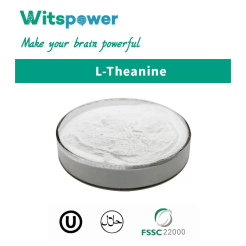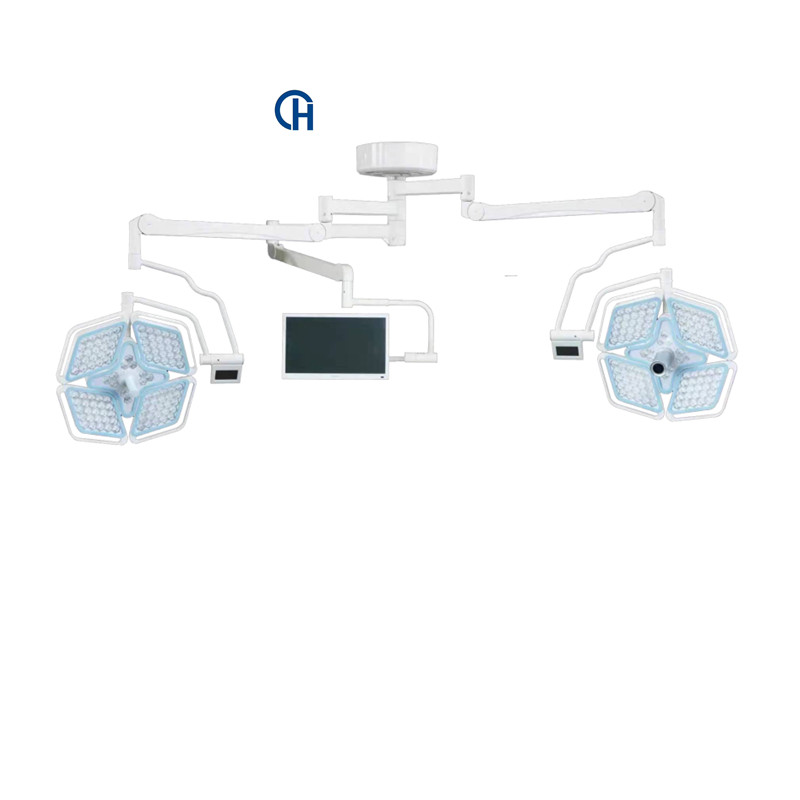Xylitol is an organic compound with the chemical formula C5H12O5. It is native to Finland and is a natural sweetener extracted from plant materials such as birch, oak, corn cob, and sugarcane bagasse. In nature, xylitol has a wide distribution range and is widely present in various fruits, vegetables, and grains, but its content is very low. For the human body, xylitol is not an imported product, it is already an intermediate in normal sugar metabolism.
Xylitol Powder - Natural Sweetener
<p>Cas: 87-99-0</p> <p>Molecular formula: C5H12O5</p> <p>Molecular weight: 152.146</p> <p>Appearance: White crystalline powder</p> <p>Solubility: highly soluble in water</p> <p>Melting point: 94-97° C</p> <p>EINECS:201-788-0</p> <p>Boiling point:215~217 ℃</p> <p>Density:1.515 g/cm ³</p> <p>Flash point:261.9 ℃</p> <p>Sample: Free Sample available</p> <p>Production capacity: 1000 tons/year</p>
Product Description

Physical and Chemical Properties:
| Density | 1.515g/cm3 |
| Melting Point | 94-97° C |
| Boiling Point | 215~217℃ |
| Flash Point | 261.9ºC |
| Active ingredient content | 99.0% |
| Appearance | White crystalline or crystalline powder, odorless, with hygroscopicity |
| Solubility | Highly soluble in water, slightly soluble in ethanol and methanol |
Molecular structure data:
| Molar refractive index | 32.76 |
| Molar volume (cm3/mol) | 99.7 |
| Isometric volume (90.2K) | 306.8 |
| Surface tension (dyne/cm) | 1.570 |
| Polarization rate (10-24cm3) | 12.98 |
Computational Chemistry Data:
| Reference Value for Hydrophobic Parameter Calculation (XlogP) | -2.5 |
| Number of Hydrogen Bond Donors | 5 |
| Number of Hydrogen Bond Receptors | 5 |
| Number of Rotatable Chemical bonds | 4 |
| Number of Tautomeric Variants | 0 |
| Topological Molecular Polarity Surface Area (TPSA) | 101 |
| Number of Heavy Atoms | 10 |
| Surface Charge | 0 |
| Complexity | 76.1 |
| Isotope Atomic Number | 0 |
| Determine the Number of Atomic Structure Centers | 2 |
| Uncertain Number of Atomic Conformational Centers | 0 |
| Determine the Number of Chemical Bond Stereocenters | 0 |
| Uncertain Number of Chemical Bond Stereocenters | 0 |
| Number of Covalent Bond Units | 1 |
Usage:
Xylitol can replace sugar and be used for candy, pastries, and beverages according to normal production needs. In actual production, xylitol can be used as a sweetener and wetting agent.The reference dosage for food is: chocolate, 43%; Chewing gum, 64%; Jam and jelly, 40%; Seasoned tomato sauce, 50%. Xylitol can also be used in condensed milk, toffee, gummies, etc. When used in pastries, it does not produce browning. When making pastries that require browning, a small amount of fructose can be added. Xylitol can inhibit the growth and fermentation activity of yeast, so it is not suitable for use in fermented foods.
Production process:
1.Neutralization and deacidification:
The neutralization and deacidification process is to use the neutralization method to purify the hydrolysate. In the 1960s, when China began trial production of xylitol in Baoding, this method was adopted, such as the first production line of Baoding factory. The process route of this method is as follows: raw materials → hydrolysis → neutralization → concentration → decolorization → ion exchange → concentration → hydrogenation → concentration → crystallization → separation → packaging
This is a typical xylitol production process. In the purification process of hydrolysis solution, a neutralization and ion exchange process is adopted. On the basis of this process, another hydrogenation solution ion exchange is added to form a neutralization and deacidification secondary exchange process, all of which belong to the neutralization and deacidification process. We know that in the production process of xylitol, corn cobs first need to be hydrolyzed to produce hydrolysate. During hydrolysis, a catalyst - sulfuric acid is added, and after hydrolysis, sulfuric acid exists in the hydrolysate. However, during the production process, this part of sulfuric acid must be removed. As the name suggests, the neutralization and deacidification process is to use neutralization to remove the acid, and the neutralizing agent is usually calcium carbonate. Sulfuric acid is neutralized by calcium carbonate to form gypsum - calcium sulfate. The solubility of calcium sulfate in water is very low, and the vast majority of gypsum becomes precipitate and is removed by filtration.
The advantages and disadvantages of neutralization and deacidification process: The neutralization and deacidification process is relatively simple, with low acid and alkali consumption, which can reduce costs. The equipment is also relatively simple, easy to operate, and requires less investment. However, as it is the initial process, there are inevitably shortcomings. Its main drawbacks come from the process itself. As is well known, although gypsum has a low solubility in water, it is not absolutely insoluble. When entering the next concentration process, as the hydrolysis solution becomes thicker, the concentration of gypsum in the hydrolysis solution also increases, showing an oversaturated state. At this time, a part of gypsum precipitates out again, depositing on the wall of the evaporator, forming an insulation layer, reducing evaporation efficiency, wasting steam, and reducing equipment utilization. Due to the difficulty in removing this layer of scaling, especially with chemical methods, mechanical methods have to be used to remove it. This is not only troublesome but also labor-intensive, causing varying degrees of damage to the equipment and reducing its service life.
2.Ion exchange
In order to solve the confusion caused by neutralization and deacidification, scientists and technicians from manufacturers have made unremitting efforts to research and develop new ion exchange deacidification processes, such as the second production line of Baoding factory. The ion exchange deacidification process uses ion exchange resin to remove sulfate ions through ion exchange. This process can also be divided into two or three exchanges, but both belong to the category of ion exchange. The process route of this method is as follows:
Raw materials → hydrolysis → decolorization → ion exchange → concentration → ion exchange → hydrogenation → ion exchange → concentration → crystallization → separation → packaging
The meaning of each exchange is different, so the ion exchange resin used is also different. The first exchange is mainly to remove sulfate ions from the hydrolysis solution, so anion exchange is used. The second exchange uses cation exchange resin. The third exchange uses both cation and anion resins, and there are also single cation resins used. The ion exchange deacidification process is relatively complex, requires a large amount of resin, requires a lot of equipment, and requires a large investment. Increased acid-base consumption and increased costs. However, the ion exchange deacidification process has its irreplaceable advantages. It solves the problem of equipment scaling in neutralization deacidification crafts, improves equipment utilization and service life, reduces the ash and acid content in the hydrolysis solution, improves the quality of the hydrolysis solution, and correspondingly improves product quality. Due to the numerous advantages of ion exchange deacidification technology, new factories have adopted this process.
Whether it is neutralization deacidification process or ion exchange deacidification process, their final exchange is to exchange the hydrogenated liquid again to improve the quality of the purified liquid and subsequently improve the product quality. The neutralization and deacidification process and ion exchange process both have their own advantages and disadvantages. Both processes must leverage their strengths and avoid their weaknesses, maximize their advantages, and improve economic benefits.
3.Key processes
The production process of xylitol is relatively long, but it is necessary to control several key processes to ensure the quality of xylitol products and the smooth progress of production. This is called collaborative leadership. Once several key processes are completed, the key points of xylitol production are grasped. Xylitol has the following noteworthy processes, which are described as follows.
| Working Procedure | Content |
| Hydrolysis | The hydrolysis process is the first step in the production of xylitol, which is crucial to the quality of xylitol and the difficulty of subsequent processing. If the quality of the hydrolysis solution cannot be controlled, it will bring a lot of trouble to the subsequent process, ultimately affecting the quality of the product. The primary issue to pay attention to in the hydrolysis process is the purification of raw materials. The raw corn cob needs to be screened, washed, and impurities removed. Do not artificially introduce impurities into the hydrolysis solution, which may cause inherent deficiencies in the quality of the hydrolysis solution. The three elements of hydrolysis process parameters are catalyst, hydrolysis temperature, and time. Among them, the catalyst is only a matter of quantity, just hold the amount of catalyst; The hydrolysis temperature is a matter of concern. A low temperature can only indicate incomplete hydrolysis, while a high temperature can cause serious consequences. A high temperature can cause xylose in the hydrolysis solution to continue to dehydrate to produce furfural or undergo deep hydrolysis to produce low-grade carbohydrates, such as acetic acid and acetone. It can also cause a large amount of protein hydrolysis to produce organic pigments and colloids, which will bring great difficulties to the subsequent purification process. To ensure an appropriate hydrolysis temperature, an automatic temperature control system can be introduced, which is already an easy problem to solve. Similarly, the hydrolysis time should not be insufficient or too long, as it will cause the same consequences as water temperature competition. How long is the best time? Although there is a basic time, it should be appropriate. This requires operators to master based on different raw materials, different climates, and long-term accumulated practical experience. |
| Neutralization | The neutralization process is a key step in the neutralization and deacidification process, which will remove the vast majority of inorganic acids - sulfuric acid. The quality of neutralization effect needs to be controlled by pH value. The pH value of the hydrolysis solution is generally between 1-1.5. When the pH reaches 4, the majority of inorganic acids are neutralized, and organic acids also begin to neutralize. When the pH value is 5, about 70% of organic acids such as acetic acid, formic acid, and levulinic acid are neutralized. To make all organic acids neutralized to pH 10. However, when the pH value is 4-5, sugar will be destroyed and pigments will be generated. Local alkalinity during neutralization can also cause the decomposition of reducing sugars. The neutralization pH value is usually 3.5 and the temperature is 70-80 ℃. During neutralization, sulfuric acid is neutralized to form gypsum precipitate, generating two types of gypsum. One is dihydrate gypsum (CaSO4 · 2H2O), and the other is hemihydrate gypsum (2CaSO4 · H2O). The solubility of these two types of gypsum is different at different temperatures. Below 80 ℃, dihydrate gypsum generates a large amount and has a smaller solubility than hemihydrate gypsum. However, if the temperature is too high, the amount of dihydrate gypsum generated is small and the solubility increases. It is hoped that the more dihydrate gypsum generated during neutralization, the better. But precipitation and dissolution are reversible. In order to generate more gypsum and have larger crystalline particles, it is often necessary to settle and cultivate crystals, but the time should not be too long to prevent precipitation from dissolving again. |
| Decolorization | The decolorization process is the main process in the production of xylitol. The pigments in the hydrolysate include natural pigments in the raw materials and pigments generated during production. Natural pigments such as anthocyanins exist as glycosides and can be hydrolyzed into a sugar and a non sugar in acidic media. They turn green in alkaline conditions. Proteins and amino acids also produce nitrogen-containing colored substances during hydrolysis, and sugars also decompose to form pigments in alkaline conditions. When sugars are heated, caramel color can also be produced. These factors will deepen the color of the hydrolysate and affect the quality of xylitol products, requiring decolorization treatment. The principle of decolorization is very complex, and due to different products, the principle of decolorization also varies. The decolorization of xylitol hydrolysate basically belongs to adsorption decolorization. Adsorbents are porous substances with a large specific surface area, and there are many types of adsorbents. Such as clay, sulfonated coal, coke lignin, and activated carbon, among which activated carbon is more widely used. Xylitol hydrolysate has also been tested with the above-mentioned decolorizing agent, but in comparison, activated carbon is still more ideal. The selection of activated carbon is very different from other solutions. According to conventional methods, the decolorization ability of activated carbon is usually the amount of methyl blue solution that can be removed per unit volume of activated carbon. However, activated carbon used for decolorization of xylitol hydrolysate cannot be tested using this traditional method. It is necessary to compare the ability of activated carbon to directly dehydrate the hydrolysate in production to determine the quality of activated carbon. Since the principle of decolorization is adsorption, there is a coexistence of adsorption and desorption. In order to make decolorization progress in the positive direction, the decolorization speed should be fast and the temperature should not be too high. |
| Ion exchange | Hydrolysate (also known as xylose syrup) has a relatively low purity and contains various pigments, ash (gypsum, etc.), various acids (sulfuric acid, acetic acid, etc.), nitrogen-containing substances (proteins, amino acids, etc.), colloids, etc. It is difficult to produce qualified xylitol products through hydrogenation of xylose syrup with complex impurities without purification. So it is necessary to purify the xylose syrup, otherwise it will cause poisoning and failure of the hydrogenation catalyst. To achieve a purity of over 95%, after two exchanges, the color of the xylose syrup is transferred to a colorless and non acidic state to ensure the smooth progress of the hydrogenation reaction and improve the quality and yield of the product. Both production processes have an ion exchange process, which is a crucial process in xylitol production and affects the quality of xylitol. There have been new breakthroughs in the selection of ion exchange resins and the improvement of exchange processes. At the same time, the purpose of each exchange is also different. Taking three exchanges as an example, let's take a look at the role and development of the exchange process. The first exchange is mainly to remove inorganic and organic acids from the hydrolysis solution. Sulfate ions are anions, so the first exchange was using anion exchange resins. There are many types of anion exchange resins, and not every resin is suitable for the production of xylitol. The technical personnel of the original Baoding factory have done a lot of work in this area, invested a lot of manpower and financial resources, and after years of dedicated research, they have conducted a detailed screening of various resins at home and abroad, achieving gratifying results. They have selected macroporous D-type anion resins suitable for the requirements of xylitol production, such as macroporous anion resins D296, D290, and other models, making due contributions to the development of the xylitol industry. The first exchange using macroporous anion resin can not only remove anions, but also adsorb and remove many colloidal impurities and pigments The purpose of the second exchange is to remove ash and cations, so cation exchange resins are used. There are also many types of cation exchange resins, but the commonly used ones are strong acid type 732. Strong acid type 732 cation exchange resins are styrene sulfonic acid type resins with sulfonic acid groups as their functional groups. These resins have high strength, large exchange capacity, and long service life. Cation exchange resin can not only remove cationic impurities during exchange, but also remove colloids and non sugars, such as uronic acid, glucuronic acid, and nitrogen-containing compounds in the form of adsorption. The third exchange is for the purification of the hydrogenated liquid. After purification, the xylose syrup will increase acidity and metal ions through hydrogenation. To further purify and remove these impurities, the third ion exchange is used. Generally, cation resin is used for the third exchange. This is the anion cation exchange process. |
OEM&ODM Compound Sweetener:
We are a professional manufacturer of natural sweeteners. In addition to supplying regular D-Mannose oligosaccharides specifications, we can also provide you with the best sweetener solution according to your needs. At the same time, we can also provide composite and alternative sugar solutions based on your formula.
Certificates:
Package:
 |
 |
 |
|
5 Grams to 2kg Packaging: Alu-bag |
5 KG/Al-Tin Packaging: 2 pcs Alu-tin with box |
25 KG, Packaging: Drum (54*37*37cm)=0.07CBM N.W:25KG / G.W:28KG |
Delivery:

Why Choose Us

We are professional Natural sweetener supplier. Contact us now to get quotation and free samples! If you don’t see the sweetener you need on the website, please feel free to send your request!
Email: sales@greenspringbio.com
Tel.: +86 132 2777 5215
Fax: +86-29-88328052
Whatsapp: +8613227775215
Add.: China Office Add: Floor 14 Suite B, HuiXin IBC, No.1 Zhang Ba 1 Road, Hi-tech Development Zone, Xi'an. China.
Add.: France Office Add: 149 Avenue DU MAINE 75014 PARIS 14 Phone: +33 659468007












